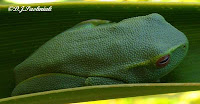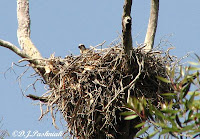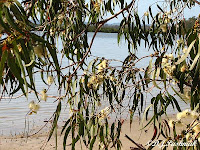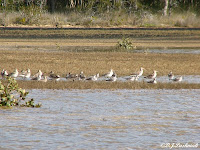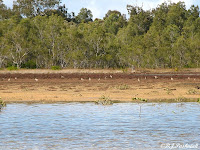I found it a daunting experience when I was first confronted with a flock of several thousand terns. Nearly three years later and it is even more frustrating since I am now aware of how much I still don't know! I am learning! But I wish it could be faster!
I am greatly indebted to Jill Dening from the Sunshine Coast. First she let me join her group which was surveying all shorebirds and seabirds on the Noosa River sandbanks. Then she is a great teacher and extremely patient with questions which have to be asked and answered a number of times. The other members of the group, who are all more experienced than I am, have also been a great help.
This post is just about Crested Terns. It is an attempt to give some idea of the sequence of moult throughout the year. I will not include photos from every month but enough to show the changes in plumage throughout the year.
January: the first bird is in breeding plumage. The next is a juvenile which appears to have been born very late in the previous season.

February: An adult still in breeding plumage with a juvenile and next a juvenile and an adult going out of breeding plumage.


April: A juvenile begging for food from an adult. There are always a few juveniles that continue to beg from an adult (presumably a parent) long after they have come here from the islands where they are born. They are well able to look after themselves and Jill says that she has never seen one actually being fed.

June: First an adult well into non-breeding plumage and next two juveniles from the last breeding season.


August: An adult about to go into breeding plumage.
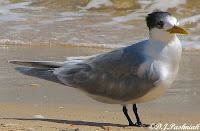
October: Adults in breeding plumage. The second photo shows the birds strutting around and displaying their plumage.


November: An adult on the left but not in breeding plumage and a juvenile from the previous season.





 Have a look at the Bird Photography Weekly site.
Have a look at the Bird Photography Weekly site.

